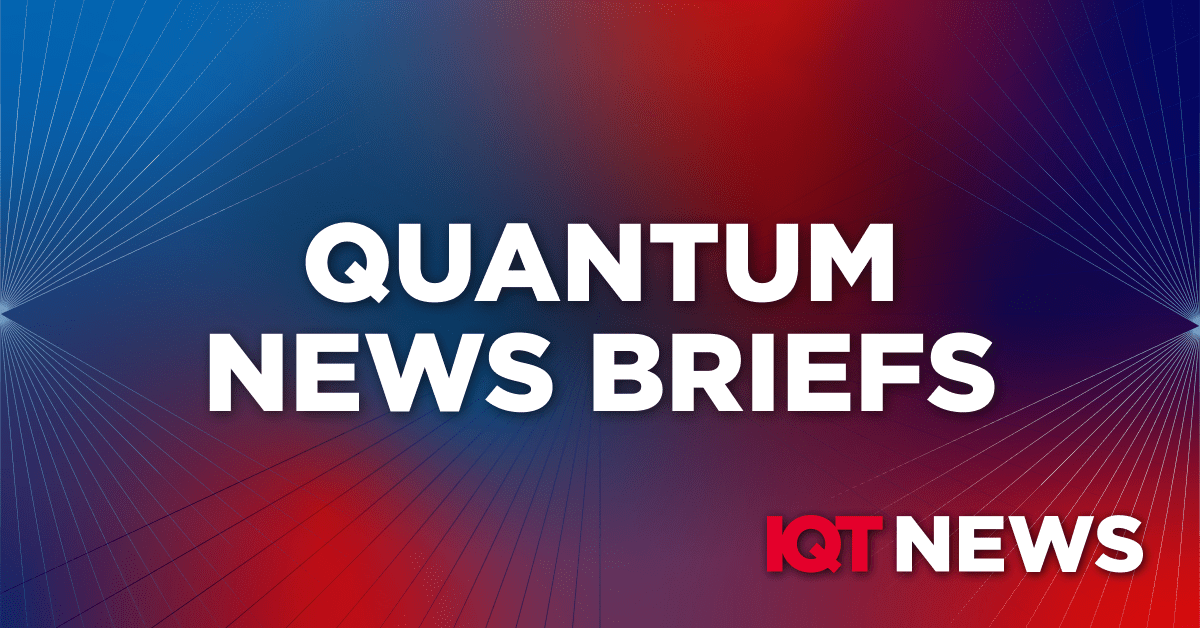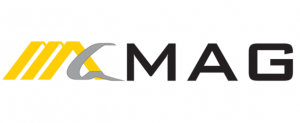Quantum News Briefs October 4: Nu Quantum and NQCC Lead Effort to Network Quantum Processors in the UK • IonQ Demonstrates Remote Ion-Ion Entanglement • Norwegian Government Sets Aside NOK 70 Million Annual Investment to Quantum Technology • DOE Awards Grant to Interlune to Pursue Helium-3 Technology Used in Superconducting Quantum Computing Development • MAG Aerospace Partners with Zapata AI to Deliver Next-Generation Airborne Surveillance Platform

Nu Quantum and NQCC Lead Effort to Network Quantum Processors in the UK
Nu Quantum, a leading quantum networking company, and the UK’s National Quantum Computing Centre (NQCC) are announcing Project IDRA – the first phase of a 4-year project to build a pioneering optically connected, multi-node distributed quantum computing system according to October 4 news announcement.
The work will be based at the NQCC facility in Harwell, removing scientific blocks to scaling quantum computers and placing the UK in a world-leading position. NQCC’s involvement with IDRA is supported by NSSIF (the National Security Strategic Investment Fund).
Scaling quantum computers to commercial utility requires billions of coherent operations across millions of qubits. Individual quantum cores or quantum processing units (QPU) will soon offer access to thousands of qubits per device. The most promising route to scale these devices further, and the main focus of Project IDRA, is to network multiple QPUs together.
In quantum computing, the term “networking” means to create entanglement between two distant qubits inside different QPUs – the same sort of entanglement that exists between qubits inside a QPU, and which powers the computation. In this case, a quantum networking layer creates entanglement between qubits inside multiple QPUs, which can then carry out complex computations by acting as one larger and more powerful machine.
IonQ Demonstrates Remote Ion-Ion Entanglement, a Significant Milestone in Developing Networked Quantum Systems at Scale
 IonQ (NYSE: IONQ), a leader in the quantum computing industry, announced October 3 it has achieved the next milestone on the path towards scaling its quantum systems – demonstrating remote ion-ion entanglement. Building off the ion-photon entanglement achievement announced in February, this demonstration announced in September showcases the second out of four significant milestones required to develop photonic interconnects – a foundational step towards quantum networking and a core component of IonQ’s scaling strategy.
IonQ (NYSE: IONQ), a leader in the quantum computing industry, announced October 3 it has achieved the next milestone on the path towards scaling its quantum systems – demonstrating remote ion-ion entanglement. Building off the ion-photon entanglement achievement announced in February, this demonstration announced in September showcases the second out of four significant milestones required to develop photonic interconnects – a foundational step towards quantum networking and a core component of IonQ’s scaling strategy.
IonQ’s world-class R&D team entangled two trapped ion qubits from separate trap wells using entangled photons to achieve these results. The IonQ team achieved remote entanglement by developing a system to collect photons from two trap wells and routing them to a single detection hub. This critical “point-to-point” step established a quantum communication link – an essential piece in scaling quantum systems. While IonQ has always intended to implement photonic interconnects in its systems, never before has any company demonstrated the ability to bring this technology to an integration stage within a commercially available, enterprise-grade quantum computer. More details about IonQ’s latest milestone are available in the blog post here.
In Other News: OsloMet Reports “Norwegian Government Sets Aside NOK 70 Million Annual Investment to Quantum Technology”
 The Minister of Digitalisation and Public Governance, Karianne Tung; the Minster of Defense Bjørn Arild Gram and the Minister of Research and Higher Education Oddmund Hoel have agreed to set aside NOK 70 million annually in the Norwegian state budget for research into quantum technology.
The Minister of Digitalisation and Public Governance, Karianne Tung; the Minster of Defense Bjørn Arild Gram and the Minister of Research and Higher Education Oddmund Hoel have agreed to set aside NOK 70 million annually in the Norwegian state budget for research into quantum technology.
The ministers visited OsloMet’s Quantum Hub to launch the initiative, which they described as highly anticipated. OsloMet’s Quantum Hub is a leading national professional environment within quantum data processing and mathematical modelling. Professor Sølve Selstø from the Quantum Hub demonstrated to the three ministers how the university’s quantum computers can perform calculations.
The Minister of Digitalisation and Public Governance pointed out that quantum technology is a tool that can contribute to meeting several major societal challenges, for example linked to climate and the need for new medicines.The Minister of Defense emphasized the need to increase expertise in quantum technology, which can be used to crack encryption.
The professor made the ministers aware of another issue to be aware of. “Quantum technology brings with it a democratic challenge, there are many people in society who do not know anything about it. At OsloMet, we have started to include the topic in teaching in relevant courses,” he says.
DOE Awards Grant to Interlune to Pursue Helium-3 Technology Used in Superconducting Quantum Computing Development
Interlune , a natural resources company, announced on October 3 a $365,000 grant from the U.S. Department of Energy (DOE) to pursue new technology that would separate Helium-3 from domestic Helium supplies. Notably, the proposed approach would not require the production of additional tritium, which is used for nuclear weapons and decays into Helium-3 over time.
Recent growth in superconducting quantum computing development has spurred significant increases in demand for dilution refrigerators that use Helium-3 to reach the extremely cold millikelvin temperatures needed for qubit processing and error correction. Because the refrigeration systems capable of reaching millikelvin temperatures require Helium-3, the limited quantity currently available presents a bottleneck for future growth in quantum computing. An increased supply of Helium-3 would also benefit other areas, like border security, medical imaging, and fusion energy.
Interlune aims to be the first company to commercialize natural resources from space, starting with Helium-3 from the Moon, which it will sell to commercial and government customers. This year, Interlune received a NASA TechFlights grant to advance its proprietary technology to process lunar soil and announced $18 million in seed funding. In 2023, the company received a National Science Foundation (NSF) Small Business Innovation Research (SBIR) Phase I award to develop technology to size and sort lunar regolith. The company is planning several missions to the Moon later this decade.
MAG Aerospace Partners with Zapata AI to Deliver Next-Generation Airborne Surveillance Platform
 Zapata AI (NASDAQ: ZPTA), a leader in AI solutions for large enterprises and the defense sector, recently announced the first commercial agreement of its partnership with MAG Aerospace (“MAG”). MAG is the leading independent defense contractor providing full-spectrum outsourced ISR (intelligence, surveillance, reconnaissance) services for manned and unmanned systems, and a full spectrum of multi-domain deep sensing capabilities, including cyber, electronic warfare, and tactical communications in theaters around the world. In the initial phase of the partnership, Zapata will build foundational elements of MAG’s next-generation integrated surveillance platform.
Zapata AI (NASDAQ: ZPTA), a leader in AI solutions for large enterprises and the defense sector, recently announced the first commercial agreement of its partnership with MAG Aerospace (“MAG”). MAG is the leading independent defense contractor providing full-spectrum outsourced ISR (intelligence, surveillance, reconnaissance) services for manned and unmanned systems, and a full spectrum of multi-domain deep sensing capabilities, including cyber, electronic warfare, and tactical communications in theaters around the world. In the initial phase of the partnership, Zapata will build foundational elements of MAG’s next-generation integrated surveillance platform.
The Zapata and MAG teams will work to enable next-generation ISR relying upon advanced sensor fusion technology, bringing together airborne and ground-based sources, and a wide variety of signal and sensor types – such as radar, camera, SIGINT, LiDAR, and thermal imaging – powered by real-time data processing, correlation, image classification, and decisioning at the edge to automate target acquisition, identification, and tracking. The teams will also build reconfigurable software packages based on specific mission objectives, along with dynamic communications to optimize how information is collected, fused, and shared across contested networks. This integration represents a significant step forward in ISR capabilities, with significantly improved performance in enabling tactical decision superiority across any number of challenging operational environments.




















